
प्रणम्य शिरसा देवं गौरीपुत्रं विनायकम् ।। भक्तावासं स्मरेनित्यमायु:सर्वकामार्थसिध्दये ।।
ॐ श्री गणेशाय नम:
Salutations to Sri Ganesha who is the Deva to be Saluted first by bowing the Head, who is the Son of Gauri, and who is Vinayaka, who is the abode of the devotees, and who should be remembered always for accomplishing Long Life, Health, Fulfillment of Desires and (also) Objectives (of Life).
What is Ganesh Vinayak Chaturthi? Ganesh Chaturthi Meaning

Shri Ganesh is one of the prime deities in Hinduism. Ganesha is the Son of Bhagwan Shiva and Maa Parvati. Since he is born out of their union, he personifies life, duality, and manifestation in diverse aspects. Ganesha is highly charming and mesmerizing. He is the remover of problems and obstacles. He is one of the most loved and revered deities and he is also known as Vinayaka.
Why is Ganesh Chaturthi Celebrated? How Many Days Ganesh Chaturthi is Celebrated?

Ganesh chaturthi is first day of 10 days festival celebration. It is also known as Vinayaka Chaturti. Ganesh Chaturthi is celebrated for 10 days. Hindus celebrate it as the arrival of Ganesh to Earth from Kailash Parvat with his mother Parvati. Devotees celebrate this festival by installing clay idols of Ganesha. This is done either at homes or public spaces by making pandals or stages. He is the Lord of letters and is associated with intellectualism. Hence, he is the patron of authors, bankers, scholars and the like.
He is also called ‘Vighnaharta’ i.e. the remover of obstacles. deep research of holy Vedas and pious Bhagavad Gita and other scriptures provides evidence that the whole universe is created by Aadi Ganesha who is immortal. He is the destroyer of sins. (Yajurved Adhyay 8 Mantra 13) He is the remover of obstacles.
Few of the most popular names Ganesh is addressed with are ‘Ganapati’, ‘Gajanana’ ‘Vinayak’, ‘Lambodar’, ‘Sukhakarta’, ‘Dukhaharta’, etc. With an elephant head and a huge belly, Ganesh is known to protect his devotees from all the Vighna (hurdles/obstacles) that come in their life.

He is the highly revered and adored deity who is worshipped in almost every Hindu household. His birth anniversary is celebrated all over the nation and abroad, but the Indian state of Maharashtra is famous worldwide for celebrating Ganesh Chaturthi with great fervor, enthusiasm and total dedication.
Ganesh Chaturthi in 2025 will begin on Wednesday, 27th August, with the auspicious Madhyahna Ganesha Puja Muhurat from 11:06 AM to 01:40 PM. This 10-day (on average) celebration will conclude on Saturday, 6th September 2025, with Ganesh Visarjan and Anant Chaturdashi festivities. The ending date may vary depending on the location and state.

Worshipping Shri Ganesh duly aids in the resolution of all issues, bringing happiness and prosperity into one's life. In Hinduism, Shri Ganesh is worshiped before the commencement of any endeavor, work, or religious puja to ensure that everything goes well and produces the desired results.
Ganesh Chaturthi is a massive celebration like no other that unites millions of people fully absorbed in Bhakti at homes, in the streets and all over the cities and towns, with huge parades carrying Ganesha idols.
Vinayak Chaturthi Date and Time (Tithi & Muhurat)
Ganesha Chaturthi on Wednesday, August 27, 2025
Madhyahna Ganesha Puja Muhurat - 10:26 AM to 12:59 PM
Duration - 02 Hours 33 Mins
Ganesha Visarjan on Saturday, September 6, 2025
On previous day time to avoid Moon sighting - 01:54 PM to 07:51 PM, Aug 26
Duration - 05 Hours 57 Mins
Time to avoid Moon sighting - 08:42 AM to 08:22 PM
Duration - 11 Hours 40 Mins
Chaturthi Tithi Begins - 01:54 PM on Aug 26, 2025
Chaturthi Tithi Ends - 03:44 PM on Aug 27, 2025
How do we celebrate Ganesh Chaturthi (Rituals)
.jpg)
Bring home the Ganesha idol constructed from eco-friendly materials. You can bring him on the day of Chaturthi or well ahead of time. The Lord's trunk should be turning to the left (clockwise). It is considered unlucky if the trunk turns to the right side.
A Ganesha statue can be securely placed with the trunk to the left, straight, or in the air. It is customary to cover the head of the idol with a red and gold bordered cloth before installing it on the day of Chaturthi. Before installing the idol inside home, have one of the family members bring a bowl of rice and sprinkle it on the murti and do a small prayer to welcome him.
Ganpati Sthapana Vidhi & Time
Ganesh Sthapna time is 10:26 AM to 12:59 PM on 27 th August 2025.
Before putting the Ganesh idol, some uncooked rice, a betel nut, turmeric, red sandal powder, sandalwood paste, kumkum, lamp, and a kalash with Gangajal water should be offered to it. Ganesha should never be put near restrooms, even if the back of the idol is against a wall separating the room from the restroom.
Place it in the East or Northeast corner (Ishan-kon) of home. Never keep him in a bedroom. Face the Idol towards West, so that while praying, you are facing East.
Ganesh Sthapna Mantra
वक्रतुण्ड महाकाय सूर्यकोटि समप्रभ।
निर्विघ्नं कुरु मे देव सर्वकार्येषु सर्वदा॥
Salutations to the deity who has a curved trunk, a large body, and the brilliance of a million suns. O Lord, please remove all obstacles from my endeavors.
Ganesh Chaturthi Puja Vidhi
During the 10-day celebration, there are four primary rites that are done. Pranapratishtha, Shhodashopachara, Uttarpuja, and Ganpati Visarjan are the four.
Ganesha statues are placed in elaborately adorned 'pandals' in homes, temples, or communities. Flowers, garlands, and lights adorn the statue as well.
Then, in 16 various methods, prayers are presented to Ganesha's statue. This is known as Shhodashopachara.
The Uttarpuja ceremony is subsequently conducted, which involves respectfully bidding farewell to Ganesha. This is followed by Ganpati Visarjan, a ritual in which the statue is submerged in water.
Although Ganesha Puja may be performed throughout Pratahkala, Madhyahnakala, and Sayankala, Pratahkala is recommended for Ganesha Chaturthi Puja. Ganesha Chaturthi Puja Muhurat provides the Madhyahnakala Puja timing for Ganesha Puja.
First thing in the morning, take a bath.
Put on clean clothing. It is most auspicious to wear red clothing.
Maintain a day-long vrat. You can follow a fruit and milk diet with sattvic foods that are acceptable during fasting, or you can only eat one meal each day. The meal, however, should be taken only after conducting puja during Madhyana.
Make all necessary preparations and Naivedhya for the puja. Decorate your puja altar with banana leaves, mango leaves and colourful decoratives.
Before beginning the Puja, Deep-Prajawalan and Sankalpa are performed.
Start The Shodapchar Puja (16 Step Puja)
-
On the first day, Avahana and Pratishthapan are performed.
Avahana – Puja should commence with an invocation of Shri Ganesha, this is to chant Ganesh Mantra in front of his Murti, by showing Avahan Mudra (Avahan Mudra is made by bringing both hands together and folding both thumbs inwards)
Pratishthapan – Once Ganesha has been invoked, then while chanting his mantra install the Idol of Ganesh. Once this is done, spread 5 betel leaves near the feet of Ganesh and place one supari on each. Sprinkle some turmeric powder and some Kumkum on each of these betel leaves and suparis. -
Asana Samarpan
Once Lord Ganesha murti has been installed, take five flowers in Anjali (by connecting the palms of both hands) then place them in front of the Idol to give Shri Ganesha a seat. -
Padya Samarpan
Offer him water for washing his feet after giving Asana to Ganesha. -
Arghya Samarpan
Offer fragrant water to Vighnaharta, after offering Padya. -
Achamana
Offer Ganesha water for Achamana after Arghya has been offered. -
Snana
Snana - Give Shri Ganesha water for the bath after Achamana.
Panchamrita Snanam – Now give Shri Ganesha a bath after Snanam and Panchamrit (the milk combination, curd, honey, ghee and sugar).
Payah/Dugdha Snanam – Now give Paya (milk) to Shri Ganesha after Panchamrita Snanam.
Dadhi Snanam – Now give Shri Ganesha a curd bath after Dugdha Snanam.
Ghrita Snanam – Now give Shri Ganesha a bath after Dadhi Snanam.
Madhu Snanam – Now offer a honey bath to Shri Ganesha after Ghrita Snanam.
Sharkara Snanam – Now offer a sugar bath to Shri Ganesha after Madhu Snanam.
Suvasita Snanam – Now offer a bath with fragrant oil to Shri Ganesha after Sharkara Snanam.
Shuddhodaka Snanam – Now give a pure water bath to Shri Ganesha following Suvasita Snanam. -
Vastra Samarpan and Uttariya Samarpan
Vastra Samarpan – Now offer brand new clothes (Moli) to Ganesha.
Uttariya Samarpan – Now offer clothes for His upper body parts. -
Yajnopavita Samarpan
Now offer Yajnopavita to Shri Ganesha. -
Gandha
Now offer scent to Shri Ganesha. -
Akshata
Now offer Akshata (complete rice) to Ekdantaye. -
Pushpa Mala, Shami Patra, Durvankura, Sindoor.
Pushpa Mala – Now offer a garland made of flowers to Ganesha.
Shami Patra – Now offer Shami Patra.
Durvankur – Now offer 3 or 5 leaves of Durva.
Sindoor – Now offer a tilak of vermilion. -
Dhoop
Now offer Dhoop to Shri Ganesha. -
Deep Samarpan
Now offer Deep Samarpan to Ganesha. -
Naivedya and Karodvartan
Naivedya Nivedan – Now offer Naivedya to Shri Ganesha. Ganesha loves offerings like Modak, Gujiya and Ladoos and seasonal fruits.
Chandan Karodvartan – Now offer Chandan mixed with water to Lord Ganesha. -
Tambula, Narikela and Dakshina Samarpan
Tambula Samarpan – Now offer Paan with betel nuts to Ganesha.
Narikela Samarpan – Now offer a coconut.
Dakshina Samarpan – Now offer a gift or some cash to Ganesha. -
Aarti and Pushpanjali
Pradakshina – Offer symbolic Pradakshi (circumambulate from left to right of Shri Ganesha) with flowers at the completion of the 16-step process.
Rudra Centre Puja Services Performed Ganesh Chaturthi Maha Puja on 27 th August 2025.
Click on the below link to book the Ganesh Chaturthi Maha Puja
https://www.rudraksha-ratna.com/buy/ganesh-chaturthi-mahapuja
Rudra Centre Puja Services conducted Ganesh Chaturthi Maha Puja which started with Aarti and Sankalpa. Prayers were offered to Shiva Parivar, Goddess Laxmi & Lord Ganesha for Wisdom, Prosperity and Good Fortune. This was followed by Abhishek of Laxmi & Ganesh. Lord Ganesha the Vignaharta prayed for removal of obstacles and delays. Recitation of Ganpati Atharvasheesh Stotra and Ganpati Mantra Japa filled the devotees with spiritual bliss and joy.
Ganesh Chaturthi Mantra:
ॐ वक्रतुण्ड महाकाय सूर्यकोटि समप्रभ। निर्विघ्नं कुरु मे देव सर्वकार्येषु सर्वदा॥
ॐ एकदंताय विद्महे, वक्रतुण्डाय धीमहि, तन्नो दंती प्रचोदयात् ॥
ॐ महाकर्णाय विद्महे, वक्रतुण्डाय धीमहि, तन्नो दंती प्रचोदयात् ॥
ॐ गजाननाय विद्महे, वक्रतुण्डाय धीमहि, तन्नो दंती प्रचोदयात् ॥
Ganesh Chaturthi Vrat Vidhi (Fast Procedure)
.jpg)
Rise early in the morning (preferably during Brahma Muhurat - approximately two hours before sunrise) and take a bath.
Wear clean clothes.
Maintain celibacy.
Do not consume rice, wheat and lentils in any form. You may, however, have fruits, milk or Vrat recipes.
Some people observe fast for the span of ten whole days, while some fast for lesser days.
During fasting one may consume fruits, milk and Sago, tapioca, buckwheat, singhara, rajgira, sweet potato and other items permitted in fasting. You can break the fast in the evening with one meal.
(Assess your health condition before observing the Vrat because fasting for hours together could prove detrimental to your wellbeing. Consult your doctor in case you are under medication or have an existing medical condition.)
Do Naam Jaap. Chant 'OM Ganeshaya Namah'.
Keep away from tobacco and alcohol.
Ganesh Chaturthi Vrat Katha:

The story behind the observance of Ganesh Chaturthi revolves around the birth and significance of Shri Ganesha, the elephant-headed deity who is widely revered as the remover of obstacles and the god of beginnings.

According to Hindu mythology, Goddess Parvati created Ganesha from the sandalwood paste she used for her bath and breathed life into him. She instructed Ganesha to stand guard while she bathed. During this time, Bhagwan Shiva, Parvati's husband, returned home. Ganesha, following his mother's orders, blocked Shiva's entry, unaware of who he was. Enraged by the boy's defiance, Shiva beheaded Ganesha with his trident.

Parvati was heartbroken and demanded that Shiva restore Ganesha to life. Realizing his mistake and to console his grief-stricken wife, Shiva instructed his followers to bring the head of the first creature they found facing north. They returned with the head of a mighty elephant, which Shiva placed on Ganesha's body, reviving him. Thus, Ganesha came to have the head of an elephant.

To pacify Maa Parvati further, Shiva granted Ganesha a boon that he would be worshipped first in any ritual or ceremony, and that he would be known as the remover of obstacles and the god of wisdom and beginnings.

This story forms the basis of Ganesh Chaturthi, a festival celebrated with great devotion and fervor. Devotees observe fasts, perform rituals, and recite this story to honor Shri Ganesha, seeking his blessings for wisdom, prosperity, and the removal of obstacles in their lives. The festival culminates with the immersion of Ganesha idols in water, symbolizing the cycle of creation and dissolution in the universe.
Ganpati Visarjan Procedure

Depending on the family tradition, Ganesh Visarjan is done on one and half-day or the third, fifth, seventh, ninth, or eleventh day.
On the day of Ganesh Visarjan, the family gathers in front of the idol and performs the final puja with flowers, lighting diyas, incense sticks, modaks, ladoos and other eatables prepared for the day. The puja concludes with the waving of camphor flame in front of the idol.
The whole family chants prayers. The head of the family then sprinkles turmeric rice (Akshat) on the idol, finally doing a Namaskar.
The eldest male member of the family touches the idol and gently moves it as a mark of starting the farewell journey.
One must offer curd and sweets to Shri Ganesha as they bid him farewell. The family bundles some rice and cereals in a red cloth to accompany him during his voyage back to his abode.
The family then chants the shlokas of Ganesh. The designated male member carries the idol and takes the idol around the house for a final round.
More members gather for the visarjan and set out to bid farewell to Ganesha. Upon reaching the visarjan spot, which is usually a water body like river, lake, pond, or sea, the Ganesh idol is respectfully immersed in the water accompanied by the chanting of Ganesh names and slogans.
The devotees pray Shri Ganesh to bless their households and return for the puja next year.
People should use eco-friendly idols and perform immersion/visarjan at home. If that is not possible at home, then idols should be immersed in nearby artificial ponds.
Ganesh Visarjan Story

Ganesh Chaturthi Visarjan marks the conclusion of the ten-day Ganesh Chaturthi festival, which celebrates the birth of Ganesha. According to tradition, the visarjan (immersion) of Ganesha idols symbolizes the cycle of birth, life, and rebirth, reflecting the belief in the impermanence of life.
The story behind the Visarjan relates to Ganesha's visit to Earth. It is believed that during Ganesh Chaturthi, Ganesha descends from his celestial abode to Earth to bless his devotees with prosperity, wisdom, and the removal of obstacles. At the end of the festival, the immersion of Ganesha idols in water signifies Ganesha's return to Mount Kailash, his divine home, to rejoin his parents, Bhagwan Shiva and Maa Parvati.
The Visarjan also represents the devotees' heartfelt request to Ganesha to return the following year, continuing the cycle of his divine presence and blessings. The immersion is performed with great devotion, accompanied by prayers, singing, and dancing, as devotees bid farewell to Ganesha with the hope of his return next year.
Significance Of Ganesh Chaturthi

Shri Ganesha is Bhagwan Shiva's and Devi Parvati's son. Ganesha denotes ‘Lord or Chief of the Ganas' as well as ‘Lord of the People’. Ganesha is commonly known for bringing people together, as evidenced by the enormous celebrations held every year to commemorate His birthday on Ganesh Chaturthi.
His large head represents big thinking. It represents his wisdom. The vast ears represent the need to listen more. The little eyes represent focus. The rope represents raising oneself to a greater level of achievement. One tusk represents retaining the good and discarding the negative.

Ganesha is depicted in images as bestowing a benediction with his right hand, which represents excellent protection on the spiritual path. The axe weapon denotes the severing of all materialistic worldly affairs. The trunk represents flexibility and efficiency. His chubby stomach means the quiet digestion of good and bad in life.
Shri Ganesha has 108 different names. Ganesha is usually addressed as Ganapati, Gajavaktra (one with an elephant's mouth), Haridra (one with golden skin), Gajanan, Dwimukha, Vighnaharta, Vighnakarta, Vinayaka, Mahaganapati, Heramba, Siddhaye, Vakpati, Shivapriya, Siddhivinayaka, Agraganyaya, Agrapujyaya, Sarva.
His potbelly has earned him the nicknames 'Lambodara' and 'Mahodara.' He has a single complete tusk, and the other is fractured, so the title 'Ekadanta,' and so on.
.jpg)
Modaks are Ganesha's favorite sweets, and Hindus celebrate Ganesh Chaturthi by cooking Modaks to gift to Him. Shri Kartikeya is his brother. And Kailash is his abode.
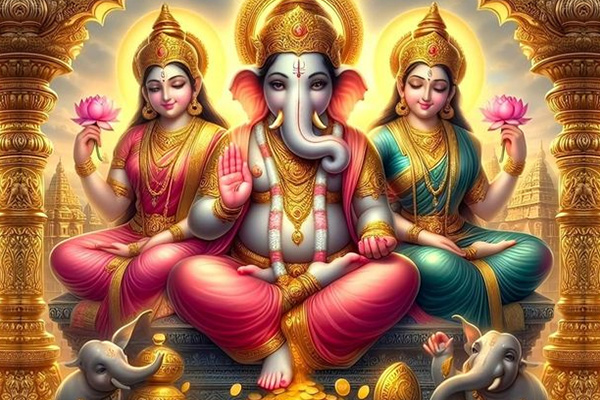
He has two wives named Ridhi (Prosperity), and Sidhi (Spiritual Power) and two children called 'Shubh' (Suspiciousness) and 'Laabh' (Profit).
Who started Ganesh Chaturthi?
Ganesh Chaturthi is one of the most resplendent festivals celebrated in India, mainly in Maharashtra. Over time, the festival is celebrated with the same fervour in many parts of south India and Gujarat. Bal Gangadhar Tilak, nationalist and 'The Father of Indian Unrest' as described by the British, was the man behind turning a private, household Ganesh Chaturthi celebration to a gala event. During the British colonial rule in India, Tilak saw an opportunity to use the festival to bring people together, inspire a sense of unity and patriotism, and circumvent the colonial restrictions on public assemblies and meetings. He encouraged the public celebration of Ganesh Chaturthi as a community event, emphasizing the cultural and social aspects of the festival.

By turning Ganesh Chaturthi into a public event, Tilak helped foster a sense of unity and solidarity among people of different castes and communities. The festival became a platform for social and political gatherings, as well to instill a sense of pride in Indian culture and traditions. Over time, Ganesh Chaturthi grew in popularity and became one of the most widely celebrated festivals in India.
Today, Ganesh Chaturthi is observed with great enthusiasm across India and in many parts of the world, with elaborate decorations, processions, prayers, and rituals marking the occasion. It is a time for people to come together, seek the blessings of Bhagwan Ganesha, and celebrate the values of wisdom, prosperity, and harmony that he represents.
Why We Should Not See Moon on Ganesh Chaturthi (Ganesh Chaturthi and Moon Story)

As per the tradition, it is believed that if a person sees the moon on Ganesh Chaturthi, they'll be cursed with accusations of theft, or as known in the legend, the Mithya Dosha. Hence, we should not see moon on Ganesh Chaturthi.
As the legend goes, it is said that God Chandra (moon), who was very handsome and took huge pride in his looks, once mocked Shri Ganesha for his appearance by making sarcastic remarks about his big belly and elephant head.
Shri Ganesha had had enough and decided to teach Chandra a lesson. Ganesha cursed Chandra saying that no one shall ever look at his beauty again and whoever looked at the moon, will have to face false allegations and invite a bad reputation.
Devastated, Chandra realized his mistake and apologized to Lord Ganesha. So, while lifting the curse, Shri Ganesha added a clause that everyone will be able to look at the moon's beauty except on the day of 'Bhadrapada Chaturthi', also celebrated as Ganesh Chaturthi.
Sloka for Seeing Moon on Ganesh Chaturthi
If you accidentally sight the moon on Ganesh Chaturthi, you should chant the Mithya Dosha Prevention Mantra to absolve yourself of the curse.
The mantra is: सिंहः प्रसेनमवधीत्सिंहो जाम्बवता हतः। सुकुमारक मारोदीस्तव ह्येष स्यमन्तकः॥ (Simhah Prasenamavadhitsimho Jambavata Hatah। Sukumaraka Marodistava Hyesha Syamantakah॥)
Information on Ganesh Chaturthi
Who Celebrate Ganesh Chaturthi?
The festival celebrates Ganesha as the God of New Beginnings and the Remover of Obstacles as well as the god of wisdom and intelligence and is observed throughout the Indian subcontinent by Hindus, especially in the states such as Maharashtra, Madhya Pradesh, Karnataka, Kerala, Odisha, Telangana, Andhra Pradesh, Tamil Nadu and Goa, as well as Nepal.
Reason Why Ganesh Chaturthi is Celebrated for 10 Days?
The ten-day celebration of Ganesh Chaturthi symbolizes the journey of Lord Ganesha from his heavenly abode to Earth, where he is welcomed with open arms. The first day marks the grand installation of Ganesha idols in homes and public places. Devotees perform elaborate rituals, including the Pranapratishtha, invoking the deity's presence into the idol. Day 2 to 9 are filled with offerings, prayers, and cultural performances. Devotees offer modak (a sweet delicacy), flowers, coconuts, and other items as a symbol of their devotion. Cultural events, including music and dance, are organized in the evenings to celebrate the deity's presence.
Why Ganesh Chaturthi is Famous in Maharashtra?
Lord Ganesha is believed to bring prosperity and good fortune. The public festival was initiated by Lokmanya Tilak in the year 1893 in Pune - to garner support for India’s freedom movement and address social issues. In Mumbai, the origin of the festival has roots in the Keshavji Nayak Chawl at Girgaum. Hence, Ganesh Chaturthi is famous in Maharashtra.
Why Ganesh Chaturthi is Celebrated Twice?
Ganesh Chaturthi is observed twice every month. The one that falls in the Krishna Paksha is called Vinayak Chaturthi and the one that occurs in Shukla Paksha is called Sankashti Chaturthi. People offer prayers to Bhagwan Ganesha and observe fast.
Why is Ganesh Chaturthi Special?
Ganesh Chaturthi is a festival that pays homage to Shri Ganesh, the remover of obstacles, and celebrates the day of his birth. Many recognize that Ganesh brings order in this universe and worship him before embarking on a new endeavor, intellectual journey, or business enterprise.
Ganesh Chaturthi is Celebrated in Which State?
Ganesh Chaturthi is celebrated in several states across India. It is a significant festival in states like Maharashtra, Goa, Gujarat, Karnataka, Telangana, Andhra Pradesh, and Tamil Nadu, among others. The festival is widely celebrated with great enthusiasm and devotion in various parts of the country. While the scale and customs may vary from region to region, the essence of the festival remains the same - the worship of Shri Ganesha, the remover of obstacles and the god of wisdom and prosperity.
Origin of Ganesh Chaturthi
It's difficult to put a date on when people first started celebrating Ganesh Chaturthi, however, many experts believe that the history of Ganesh Chaturthi celebration can be traced back to the reigns of Satavahana, Rashtrakuta and Chalukya dynasties. As per historical records, the great Maratha leader Chatrapati Shivaji Maharaja initiated Ganesh Chaturthi celebrations and Bal Gangadhar Tilak in 1893 in Maharashtra to promote the spirit of nationalism.
Spiritual items related to Ganesha:
Eight Mukhi Ganesh Rudraksha Bead
Eight Mukhi Rudraksha Bead is ruled by Lord Ganesh. As per the Glory of Rudraksha section of the Shiva Purana, an 8 Mukhi Rudraksha bead destroys lethargy, low energy and vices. These beads clear all the obstacles that are hindering your personal and professional growth.
Eight Mukhi Ganesh Rudraksha Bracelets
Find handcrafted bracelets made of 8 Mukhi Rudraksha beads. Best for those facing constant obstacles in their profession. The bracelets are energized with Ganesh Mantras.
Riddhi Siddhi Ganesh (RRCT Edition)
Riddhi Siddhi Ganesh Bracelet is a powerful bracelet based on Sakhashree Neeta's Rudraksha Ratna Chakra Therapy® (RRCT), a healing therapy for your mental, emotional and physical well-being. Best for those seeking energy and focus. Also, it pacifies malefic Ketu.
Find handcrafted malas made of 8 Mukhi Rudraksha beads. Strung in thread, silver or gold. Best for those facing constant obstacles in their profession. The malas are energized with Ganesh Mantras.
Ganesh Yantras are energized with the sound of Ganesh’s Beej (seed) mantra. It is best for name, fame and success in your personal and professional life.
Exotic Havan Herbs Kit (Set Of 108 Herbs)
An exclusive Herbs kit prepared with one hundred and eighteen herbs and a Yagnik stick. The kit is useful for Navgraha Puja, Chandi puja, Vaastu puja, & Homas.
Ganpati Bappa Morya! Pudchya Varshi Lavkar Ya!




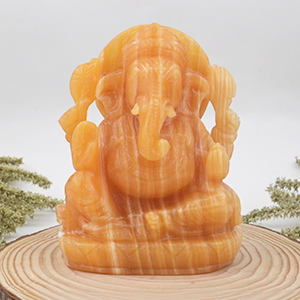
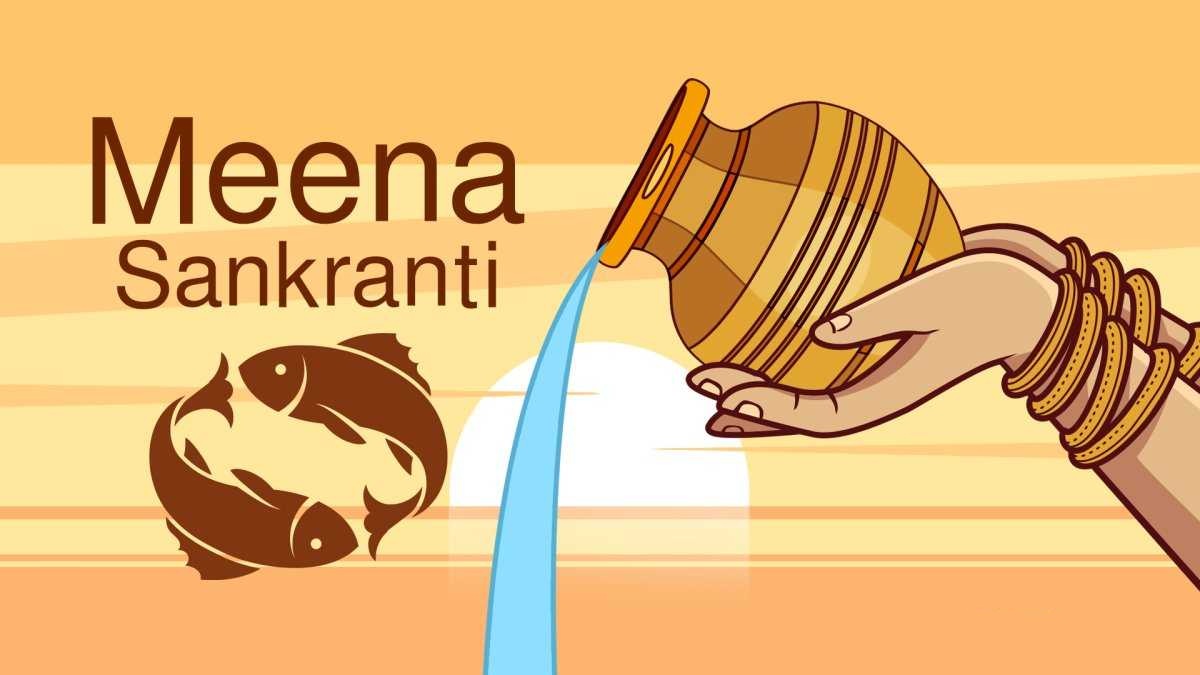
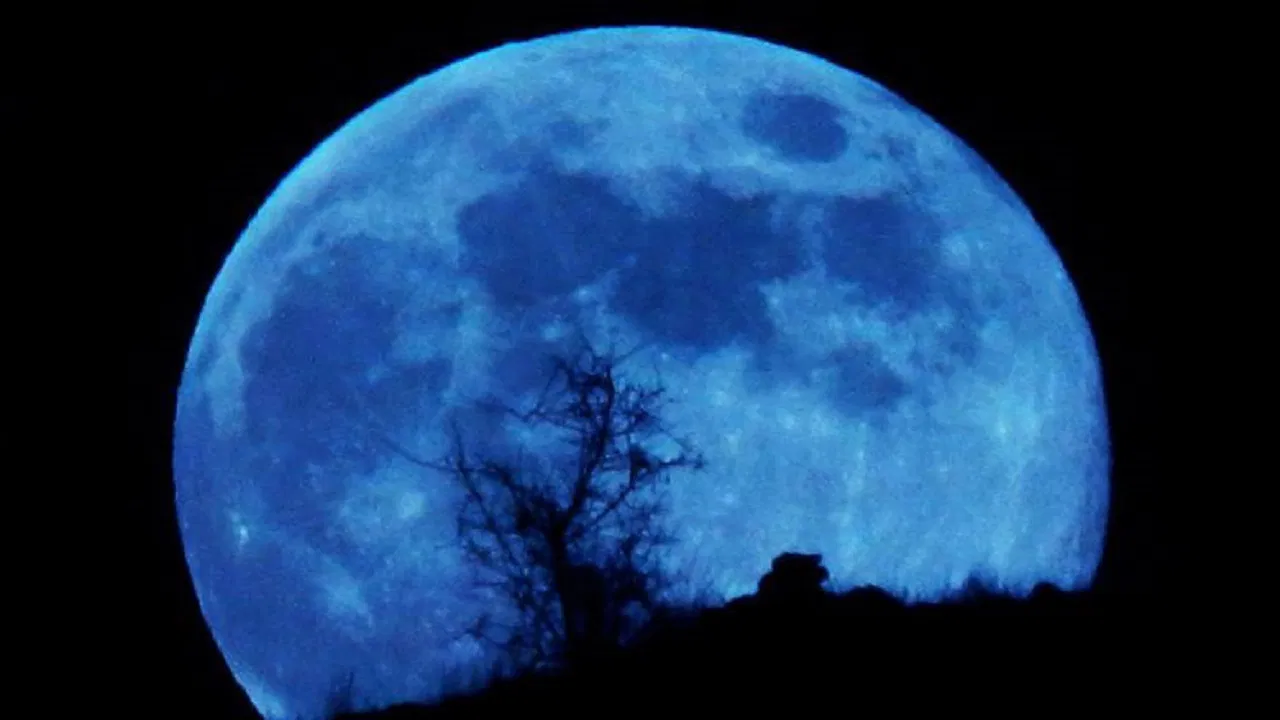
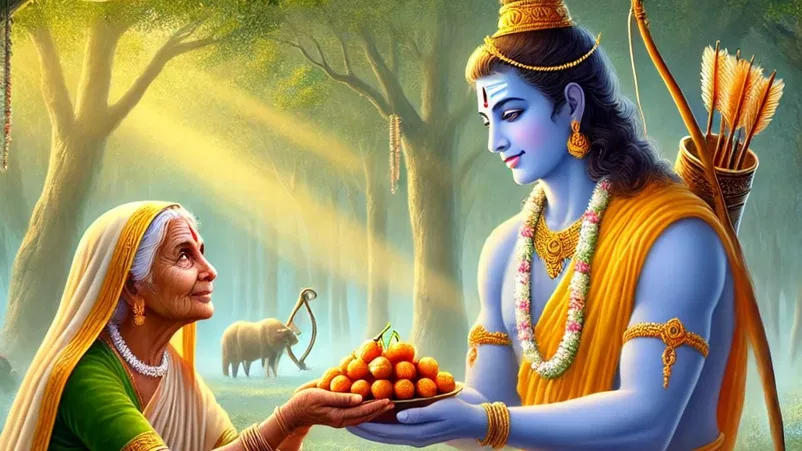
Comments 0
Leave your thought here